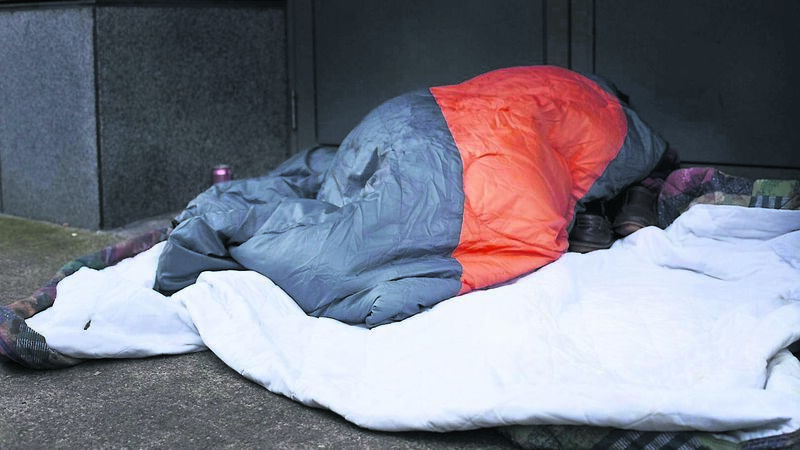Cork crime: How we can break the cycle of repeat offending and long-term homelessness

'A significant proportion of people convicted gave their address as Cork Simon or as ‘no fixed abode’ illustrates a link between homelessness and the criminal justice system that is well established in research — but the complexity of which is less well understood.'
The fact that such a significant proportion of those convicted gave their address as Cork Simon, or as “no fixed abode”, illustrates a link between homelessness and the criminal justice system that is well established in research, but the complexity of which is perhaps less well understood.
To accurately interpret the meaning behind the statistics, context is everything.
As concerning as the numbers are, they represent only a fraction of people who have experienced homelessness in Cork in the five years through 2024.
Cork Simon alone supports more than 1,500 people each year, the vast majority of whom have no involvement at all in antisocial or offending behaviour.
From Monday, June 23, 2025, the three-day series is running in the 'Irish Examiner' in print and online here.
The evidence is clear that in Ireland, as well as internationally, people experiencing homelessness are far more likely to be the victims of crime than to be perpetrators of it.
It is true, however, that there are some who are disproportionately likely to have contact with both the homeless services system and the criminal justice system.
At the root of this connection there is often a story that begins early in life and is characterised by trauma, exclusion, and desperation.
Those working with people in homeless services quickly become familiar with the reality that the small number of people who present the most complex needs and associated challenging behaviour almost always have life stories that, once you know them, will break your heart.
In recent decades, a great deal of research has been carried out on the impact of complex trauma through adverse experiences in childhood.
The evidence shows that children with repeated exposure to multiple traumatic experiences — including poverty, homelessness, addiction or mental illness within the family, violence, or neglect — are far more vulnerable to a range of risks in adulthood and throughout their lives. Along with poor mental health, substance use disorders, and cardiovascular illnesses, homelessness and offending behaviour are among those increased risks.
While almost anyone can be at risk of homelessness when affordable housing is as scarce as it is at present, the thinner a person’s social, familial, and financial safety net is, the more vulnerable they are to becoming homeless.
And the more additional challenges they have, including those which may stem from complex trauma in childhood, the higher their risk of experiencing homelessness as a long-term trauma as opposed to a temporary crisis.
The profoundly isolating and demoralising experience of long-term homelessness only compounds the existing trauma, and makes recovery — from addiction, from mental illness, and from chaotic patterns of behaviour including offending — an uphill struggle.
For some, long-term homelessness, and the substance use which many turn to as a coping mechanism, leads to their first contact with the criminal justice system through offences like public order violations and theft.
People leaving a custodial sentence are at a high risk of homelessness, and homelessness upon release in turn significantly increases the likelihood that they will re-offend, creating a cycle of long-term homelessness and repeat offending that has a devastating impact on individual lives and a significant negative impact on the community.
But it’s not a lost cause. We already know what works to break this cycle and not only end the misery of long-term homelessness for people within this complex group but also minimise their risk of re-offending and support them instead toward positive engagement with the wider community.
And just as the roots of vulnerability to both long-term homelessness and criminal justice system involvement are the same, so too are the keys to stability and recovery.
This recovery begins when people have a safe, decent home they can afford, and the support they need to maintain their housing and begin to heal from their experiences of trauma and exclusion.
We know that the only cure for homelessness is housing.
And we know, from our experience in Cork, Kerry, and Waterford, as well as from an abundance of Irish and international evidence over decades, that among those who have the most difficult histories and face the most barriers, stable housing with the appropriate support successfully ends homelessness for the vast majority — over 80%.
When a person’s experience of homelessness has finally come to an end and they have the stable base of safe, affordable housing and the support they need to set goals and navigate a new future, other aspects of their lives begin to improve as well: Better physical and mental health, reduced harms from substance use, new engagement with education, training or employment and, crucially, a steep reduction or complete cessation of contact with the criminal justice system.
We have seen it, time and time again: Just as exclusion, deprivation, and hopelessness fuel the chaos and despair represented in this week’s report, the safety of decent housing, together with the support of those who care, instead brings stability, connection, and recovery.
- Kerry Brennan is the Cork Simon Community’s director of services





